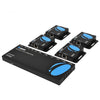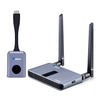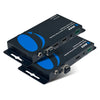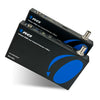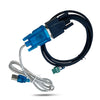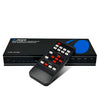
In media setups, an HDMI switch or splitter makes for an effective way of managing multiple devices and displays. Understanding their differences is important if you want to get the best out of your setup. These devices are designed to cater to those who seek streamlined connections for multiple audio and video sources across various displays, all through HDMI connections. In this article, we’ll dive into the intricate world of HDMI Splitters vs Switches. This guide can help you simplify your decision-making process and optimize your entertainment experience in no time.
Basics of HDMI Splitters and Switches
HDMI splitters and switches serve as the cornerstone of many multimedia setups, offering convenient ways to expand connectivity and manage content across multiple screens. In simple terms, an HDMI splitter duplicates a single HDMI source to multiple displays simultaneously. While an HDMI switch serves as a central hub for your multiple media systems.
Moreover, these devices come in various configurations denoted by terms like "HDMI Splitter 1x2" or "HDMI Switch 2x1", specifying the number of outputs available from a single input. For instance, a "1x2" HDMI splitter takes one input and delivers the signal across two outputs, while a "1x4" splitter disperses the signal across four outputs.

On the other hand, a switch accommodates multiple HDMI sources—like gaming consoles or streaming devices—allowing seamless switching between different devices on a single display. This flexibility eliminates the need for repetitive plugging and unplugging, making it an ideal choice for managing multiple inputs effectively.

Should I Use an HDMI Switch or Splitter?
To decide whether you need an HDMI Splitter vs Switch, you need to know the goals of your setup. There are 2 main factors you should consider, do you want multiple monitors, or do you want to streamline your multi-input setup
- Multiple Sources on One Display: If you aim to exhibit content from various sources onto a single screen and switch between them conveniently, an HDMI switch is preferable. This is ideal for scenarios like connecting multiple gaming consoles or media players to a TV where seamless switching between devices is essential.

- One Source to Multiple Displays: If your requirement involves displaying content from one source across several screens simultaneously, an HDMI splitter is the more suitable choice. This functionality is handy for business presentations, home theater setups, or digital signage, where the same content needs to be shown across multiple screens at once.

With these 2 factors in mind, you can then get a better idea on whether you need an HDMI switch or splitter for your setup. But before you decide, let’s explore each device in detail for an even better understanding of their individual capabilities, enabling you to make an informed decision about which one best suits your needs.
A splitter is a device designed to distribute a single HDMI source signal to multiple displays simultaneously. Think of it as a hub that clones and sends identical content to several screens, making it an efficient tool for mirroring presentations in conference rooms or displaying the same content across multiple TVs.
However, it’s important to know that an HDMI splitter does not allow for individual control or customization of content for each connected display. In other words, you cannot use it to extend your display. Its main function is limited to duplicating the source signal across all connected screens simultaneously.
In contrast to a splitter, an HDMI switch serves as a mediator between multiple HDMI sources and a single display. It allows users to connect various devices, such as gaming consoles, Blu-ray players, or streaming devices, to a TV or monitor with limited HDMI inputs. The switch empowers users to seamlessly alternate between different connected devices, offering convenience when accessing multiple sources from a single display.
Similar to the HDMI splitter, HDMI switches also have their limitations. HDMI switches, unless they support multiview (which we’ll be discussing later), will only allow you to display one media source at a time. This means that it can only merely allow for quick switching between connected devices.
Now, while the basic functions of splitters and switches provide a solid foundation, understanding their advanced features can further enhance your audio-visual experience. Let’s explore some of the most common and useful advanced functions of certain HDMI splitters and switchers.
HDMI Splitters and Switchers by Function
Splitters and switches offer various functionalities beyond managing signals. These advanced features cater to diverse connectivity needs, elevating audio-visual experiences and ensuring compatibility. Here are some of the most common and useful features you’ll encounter:
This capability essentially separates audio signals from the video feed, allowing the audio to be directed specifically to external sound systems or speakers. By utilizing this advanced feature, users can significantly enhance their auditory experience. Imagine streaming audio through a high-quality surround sound system while simultaneously watching movies or TV shows on your display. This function enables a more immersive cinematic experience by delivering enhanced audio fidelity, spatial effects, and an overall superior sound experience akin to a visit to a movie theater.
Advanced HDMI splitters boast a dynamic downscaling feature designed to adjust higher resolution content to match the display capabilities of connected devices. This versatile function proves particularly valuable when dealing with displays that have lower resolution capacities. What this feature accomplishes is maintaining optimal image quality by automatically reducing the resolution of the source content to ensure seamless compatibility and a consistent viewing experience across diverse display devices. For example, if you have a 4K media streaming device but your TV can only support 1080P, the downscaling feature ensures that your content is properly displayed on your screen.

Another noteworthy feature found in splitters and switches is EDID (Extended Display Identification Data) management. This feature optimizes resolution settings by effectively communicating the capabilities of connected display devices to the video source. Essentially, it prevents potential mismatches between the video source and the display by transmitting the display's supported parameters to the source device. As a result, it ensures the best possible resolution and refresh rate, significantly enhancing overall performance and user experience.
Certain HDMI switches are equipped with ARC (Audio Return Channel) or eARC (enhanced Audio Return Channel) functionality. These features streamline the audio setup between a display and an audio device by facilitating bidirectional audio signals. Specifically designed for switches, ARC and eARC permit audio to travel from the display back to an audio device, eliminating the need for separate audio cables. This seamless transmission of high-quality audio enhances the overall entertainment experience, especially when utilizing external audio systems like soundbars or home theater systems. For instance, ARC/eARC technology allows for the hassle-free transmission of audio from a smart TV back to a connected soundbar, ensuring optimal audio quality without the clutter of additional cables. This simplified setup enhances the overall user experience by providing superior sound quality and eliminating cable clutter.
As mentioned earlier, one advanced feature exclusive to certain switches is the Multiview functionality. This feature enables users to view multiple HDMI sources simultaneously on a single display screen. Particularly useful in applications requiring simultaneous monitoring or multitasking, Multiview allows for side-by-side or picture-in-picture viewing of different sources. For example, in surveillance scenarios or control rooms, users can keep track of multiple feeds simultaneously on a single display, optimizing efficiency and enhancing situational awareness.

As we conclude this guide on HDMI splitters and switches, remember that these devices serve as more than mere hardware. They’re the key to streamlining connections, managing multiple devices, and delivering a seamless audio-visual experience. HDMI splitters and switches are a great and simple solution for connecting multiple audio and video sources through easy HDMI connections.
Do you want to learn more about HDMI devices? Take a look at our blog and go through more guides on which HDMI device is best for your setup!


